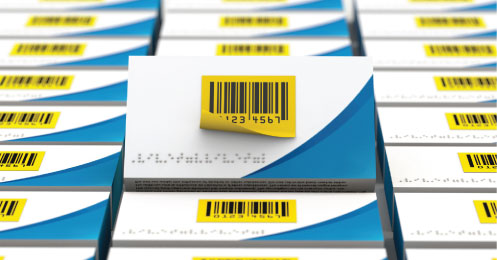We often speak with prospects who insist they need a paperless barcode solution for managing their warehouse. This piece of functionality has almost become synonymous with needing inventory management functionality in general, but there are varying levels of barcode scanning technologies and businesses can sometimes achieve the same efficiencies without spending money on the more sophisticated options. In addition, many all-in-one ERP solutions will include built-in functionality for managing barcodes. This means that before you start looking for a standalone solution, check with your ERP vendor to see if they already offer the functionality you need. If you're not using an ERP solution, consider speaking with a vendor that provides all the functionality you need - accounting, inventory management, contact management and barcode scanning - instead of adding on a new barcode scanning solution to your existing stack of software applications. With an all-in-one ERP solution, information gathered with barcode scanners will automatically update inventory information in your back-end system. This allows your team to have real-time insight into inventory quantities.
To determine what level of barcode scanning functionality can benefit your company, if any, think about the following questions:
- How many orders are received and shipped a day?
- How big is your warehouse?
- Is your warehouse set up with bin and shelf locations?
- How many picking errors do your warehouse staff deal with on a regular basis?
- Do you inventory a lot of similar products, with small differences?
- What percentage of the SKUs you carry actually have barcodes?
What is a Paperless Barcode Solution?
Barcode scanning technology refers to any piece of hardware that allows you to scan and read barcodes. This can vary from the scanners used at grocery stores to wireless scanning devices used for scanning barcodes while walking a warehouse floor. In the past, it was common for wholesalers and distributors to invest $100,000+ on a Warehouse Management System (WMS) with ruggedized wireless barcode scanners in order to better manage their inventory and orders. The other option was to manage inventory using paper and pen resulting in error, double entry and time wasted. However, with the introduction of new technologies, companies are now able to accomplish many of the same tasks with more affordable scanning devices integrated with ERP software. This option is perfect for smaller companies who don’t need a full WMS system and want to minimize their paper waste.
For businesses that manage a large volume of orders per day, have a big warehouse that is set up with bin and shelf locations, pick similar products and deal with a high number of picking errors, sophisticated wireless barcode scanning is most likely a worthy investment. However, for those companies who do not meet the above criteria (or perhaps only a few of them), a sophisticated barcode scanning solution is probably not necessary.
Option 1: Sophisticated Wireless Scanning Technology
If your company decides to invest in sophisticated wireless barcode scanning technology, you will be able to automate the receiving, picking and packing process and quickly lookup inventory items (such as product in stock and on backorder, product available at other locations, and product descriptions, categories, pricing and images) in the warehouse. This software can be used on traditional, ruggedized handheld barcode scanners or on less expensive hardware such as iOS devices including iPods and iPhones. iOS devices provide all the same functionality but are much cheaper and can be easier to use. Whatever type of handheld solution you employ, they are all designed to help businesses achieve process-driven and paperless warehouses.
Wireless barcode scanners allow users to quickly retrieve product and order information while walking the warehouse floor, pick product most efficiently following bin and shelf location and easily receive new shipments electronically. When picking an order, items get scanned at the source as they are picked and can then be brought to a packing station. When receiving product, employees can scan each item into the system which allocates it to the proper bin and shelf location and adjusts inventory levels. With barcode scanning there is no need for employees to manually track information with paper and pen as it is done automatically.
Option 2: Simple, Verification Scanning Technology
Companies with a small number of daily orders can gain a lot of the same efficiencies, without needing sophisticated and expensive wireless barcode scanning. Instead of using wireless scanning devices, verification scanning devices are set-up at different computer stations throughout your warehouse (such as receiving and packing) and manual pen and paper processes are used for picking orders. A proper inventory and accounting ERP system will allow users to print pick slips (according to bin and shelf locations if this is set up), where employees can then pick product and manually check items off the list as they go through the warehouse. After the order has been picked and brought to a packing station, employees can use verification scanning attached to a computer to pack the items while at the same time cross checking them against the pick slip.
Verification scanners are much cheaper pieces of equipment that help companies’ double check product as it gets received and packed. In this situation, some processes are more manual, however, when you’re dealing with only a small number of orders per day, this shouldn't be a problem. Your warehouse staff can still gain efficiencies by being able to print picking and packing slips, pick according to bin and shelf locations and double check orders when receiving inventory and packing a shipment.
Before assuming your company needs wireless barcode scanning, take a minute to evaluate your current processes and weigh the costs against the efficiencies that you will gain. Depending on the sophistication of your warehouse set up, you may be able to gain efficiencies without barcode scanning through other key functionality offered by inventory and accounting ERP software. Even if you do decide to invest in barcode scanning technology and hardware there are several other less-expensive options available today than compared with the traditional handheld devices.










